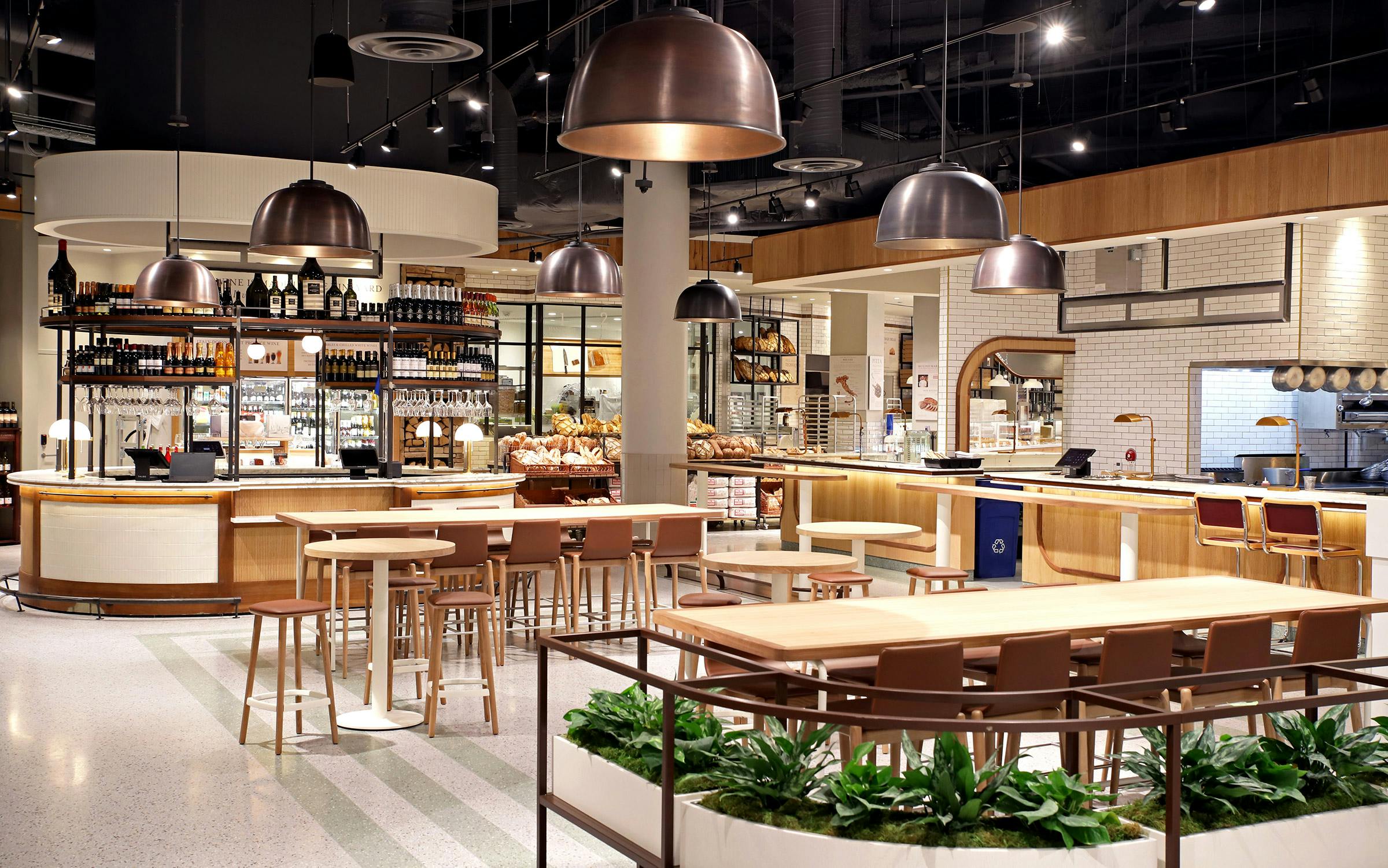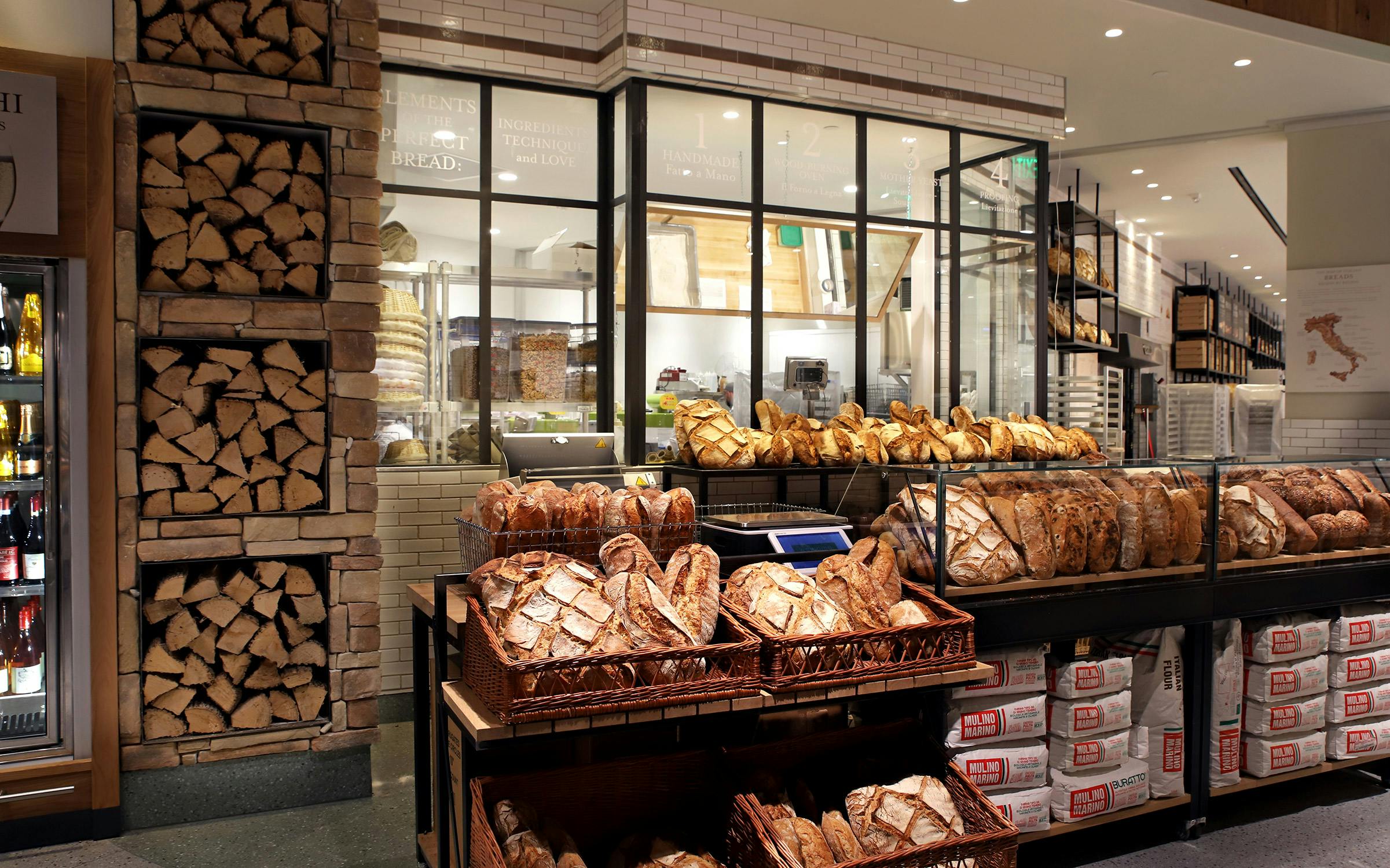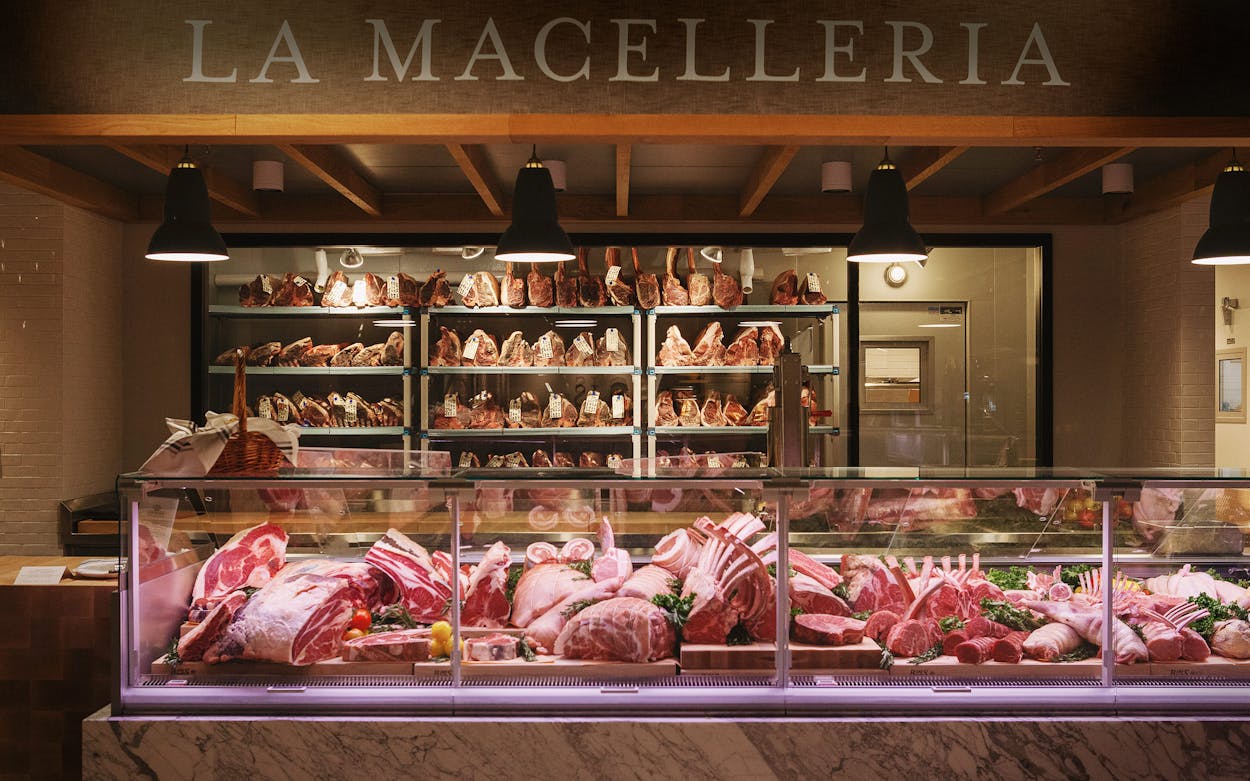International travel in the middle of a pandemic? No thanks. But you don’t have to leave Texas to go to Italy. Of course, that’s always been true: it’s fifteen miles south of Waxahachie, just off Interstate 35. But as of December 9, in Dallas, you can also go to Eataly.
The Italian culinary wonderland, part restaurant and food court, part department store and grocery, has opened in NorthPark Center. It’s the seventh location in North America, and one of forty around the world. I’ve been to the original New York location many times, as well as those in Chicago, Las Vegas, Florence, and Bologna. (For a while, though, I stopped visiting Eataly. Sexual assault accusations against minority investor Mario Batali became public in 2017. The company purchased his share in August 2019.) But because of the pandemic, I attended Eataly’s Dallas opening on Zoom.
Even if you can’t fully experience the behemoth of Eataly under current COVID safety measures, the place is an experience. Remember when you first went to Central Market and couldn’t believe the selection, in terms of both quality and quantity? And how it was a place that made you want to cook but also not want to cook, since there was so much to eat on-site? And how going to the supermarket became a leisure activity in and of itself? Eataly is all that, but entirely Italian.
As Dino Borri, the company’s vice president of brand partnerships, said during the Zoom tour, most of what’s on offer at Eataly are things that he and his staff get from the mother country. But said country is also about fresh, local and organic— Eataly was founded in Turin, the home of the slow food movement—so while the wine, cheese, salumi, dry goods, and overall cuisine is pure Italia, when it it comes to meat, produce, and some dairy, you’ll also find Texas producers (A Bar N Ranch, forty minutes north in in Celina, is one of the beef suppliers).

You don’t need Eataly to replace your favorite baker or Italian restaurant, and in this day and internet age it’s not even that hard to find Mulino Marino flour or some really good gianduja from afar. But Eataly is about the show. “Food is a culture,” Borri said during the tour, and here it’s also theater. At NorthPark, shiny black-wrapped prosciutto, giant wheels of Parmigiano Reggiano, and even a case of white truffles d’Alba are arranged around the store like mannequins at Neiman’s. There are 1,200 different Italian wines, 200 kinds of cheese, and 200 varieties of pasta, both dried and house-made. There are four varieties of pizza (simple biancas, al taglio or “by the cut” style, pizza fritta—yes, fried dough—and Neapolitan), coffee, gelato, candies, jams, and whole fish at the seafood counter. There are also three proper restaurants (one for pizza and dried pasta, one for fresh-made pasta, and one where nearly all the dishes are wood-grilled), as well as a ton of prepared foods and deli-type items. Bread (from wood-fired ovens), fresh cheese, and fresh pasta are made daily on-site. During the Zoom tour, we watched two guys in white jackets and black face masks hand-stretch fior di latte, while a chef named Paola Saglietti rolled and hand-cut taglierini, a mirror overhead providing us with a fine view of her work on the wooden block.
What we couldn’t do, as Borri lamented several times, was walk around the store sampling the fior di latte or tasting the fresh pasta, glass of wine in hand. Can’t do that on Zoom, but also can’t do that inside the store (masks can come off in the dining areas, but not while you’re wandering). Borri even told us more than once not to come out in person on opening day—such is the reality of COVID-19 that the normal level of hype and excitement, with crowds of people lining up to get inside, is unwelcome for a new business.
Still, there is a lot about Eataly Dallas that works for current times. It’s spacious, it’s takeout friendly, and it is, for all intents and purposes, a supermarket. So act accordingly, based on your own desires and comfort level. Masks, distancing, capacity limits, and other safety regulations are in place, and both restaurant dishes and market items will be available from delivery partners. Based on my past visits in other cities, here are a few things that I always get.

Breadsticks
Yes. Breadsticks. Something so simple—boring, even—is still emblematic of what Eataly’s about. They’ve been making grissini in Piedmont since the seventeenth century, and while Eataly supplier Mario Fongo Il Panate has been around only since the 1940s, the bakery still makes them basically the same way: hand-stretched, from water, 00 flour (the super-refined stuff also used for pizza and pasta), yeast, extra-virgin olive oil, and lard.
Maybe it’s the ingredients, maybe it’s the craft or maybe it’s because I was actually in Italy the first time that I had them, but they were just that much crunchier, that much more delicate, and that much more addictive. “Can’t wait to have those breadsticks again” is not a sentence I had previously uttered.
Mortadella
The emulsified pork sausage from Bologna is the reason we call the maligned American lunchmeat bologna. Typically dotted with cubes of fat (and sometimes sliced pistachios), the porky, creamy, salty meat can come in sizes as large as two hundred pounds. It’s delicious on its own, on pizza or panini, or in pasta, both as a filling or as a secret ingredient in sauce (including Bolognese). It also plays well with just about any condiment, be it something olive-based, a red pepper spread, or good old-fashioned, non-Italian mustard. And don’t even get me started on frying it. Just take a half-pound home and find out for yourself.
Licorice
If you don’t like licorice, proceed to the next paragraph. If you like it well enough but aren’t necessarily into that super-intense, sometimes-salty Dutch or Nordic stuff, then Amarelli Liquirizia of Calabria (wayyyyy down at the other end of the boot from Turin) is the company for you. Hard and soft, floral, spicy and sweet, fruit-flavored or minty—Amarelli makes it all, in dainty tins and cutely colored cardboard boxes. My favorite is the Sassolini: grayish rocks of pure chewy licorice/anise flavor, sweetened by a hard vanilla candy shell. It’s the greatest version of a Good & Plenty you will ever have.
Chickpeas
The humble garbanzo bean is good for so much more than hummus or the salad bar. When I think back on semi-recent food and travel moments that I’m ready to repeat, one is Eataly Las Vegas, where I walked around the food court and the slot machines with a Negroni and a little paper boat of ceci fritti (fried chickpeas with a sprinkling of cheese), like it was Frito pie at a Texas high school football game. Salty, crispy, and still good for you! If they’re not currently on offer in Dallas, I’d still pick up a bag of dried, which you can cook up for a classic pasta ceci (Smitten Kitchen has the easiest possible version of this dish; not using canned garbanzos pays off big-time).
Rustic Fig Bread
I’ve had love affairs with fig bread at a lot of different bakeries in a lot of different cities. But sometimes I’m not in those cities. And sometimes it’s not fig bread day. Eataly’s is not my number one, but I do know I can almost always find it here. All the “rustic breads” are made on-site each day, working from a starter (lievito madre, or “mother yeast”) that began in the Piedmont village of Monticello d’Alba (site of Eataly’s corporate headquarters) 35 years ago. Fig bread is exactly what it sounds like—an artisan loaf with generous chunks of fruit: bread that is already its own spread. If you’re classy, you’ll figure out how to pair it with vino, formaggio, salumi, olive oils! Or you can just do as I do, especially for breakfast: break off a big chunk and slather it in peanut butter. Cream cheese is good too.
- More About:
- Dallas







